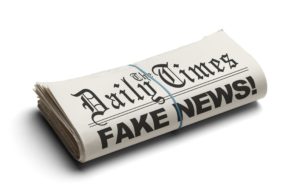In 2005, as reported here, an executive from the Pharmaceutical Researchers and Manufacturers of America (PhRMA or Big Pharma), agreed to commission, to the tune of $300,000, the writing of a fictional novel in which Muslim terrorists poison prescription drugs in Canada to kill Americans who – seeking affordable medication – buy drugs from Canada. The deal with the publisher didn’t work out. As the authors tell it, PhRMA offered money to shut them up but they said no. They instead wrote a book about a pharmaceutical company who poisoned Canadian drugs and made it look like Muslim terrorists did it. Nope, I couldn’t make this up. That book – The Karasik Conspiracy – is available on Amazon.
Fake news is in the news a lot lately! Like fake news, efforts to dissuade Americans from obtaining safe lower cost medication through personal drug importation can have dangerous consequences: people scared away from safe medication they can afford. There are – in fact – very safe international online pharmacies and dangerous rogue pharmacy sites. Stick to the former avoid the latter. There are tens of millions of Americans not taking medications because of cost — so it’s time to get real.
Now, what PhRMA did with the fictional novel was not fake news, it was just stupid and malevolent. However, the media relations efforts of groups who are funded by big drug companies, like the Alliance for Safe Online Pharmacies, do something similar to fake news, in my opinion, and others are starting to really get it.
In fact, just this week, Roger Bate, an economist and expert on counterfeit drugs, who actually tests medications ordered online and knows for a fact that properly credentialed international online pharmacies sell “real” medications at a lower cost, published a short blog post called “WebMD and fake news about web pharmacies.” The post is a response to an article in Medscape, a division of WebMD, called “The Very Real Risks Behind the $400 Billion Illegal Online Pharmacy Industry,” written by Gayle N. Scott, PharmD (who, not surprisingly, works for a pharmaceutical company).
The Medscape article rehashes discredited data in ways that misinform the healthcare community. For example, the $400 billion figure to describe illegal online sales, found in the title, is apparently based on a statistic attributed to the World Health Organization (WHO) that there is a market worth $431 billion of counterfeit, adulterated or somehow bad meds out there. First, this number is referred to as “rubbish” by Mr. Bate, who notes that there are no studies leading to such a high figure.
Second, Ms. Scott notes that 50% of medications sold online are counterfeit: a discredited statistic that the WHO once noted in its website section on counterfeit drugs but attributed to other sources, not its own research, and has since removed it as shown here. And that old statistic only applied to illegal online pharmacies that don’t display physical mailing addresses. Also, if you go to the WHO’s website and read that page, notice the absence of any billion-dollar assessment of the counterfeit drug market.
To describe this misinformation, Mr. Bate appropriately uses stronger language:
One would expect more from Medscape than to provide propaganda for domestic pharmacy and pharma interests, and I’ve pointed these types of flaws out before, and why they occur.
So when it comes to writing about buying medication online to help people find lower prices but also warn them about fake drugs – let’s get real!
Tagged with: AEI, fake news, medscape, Roger Bate, webmd, who



I believe a good share of the pharmaceuticals sold in the US are not even manufactured in this country. Corporate greed must enter into the equation.
Hi Loren – Your belief is correct. The FDA has stated 40% of medications you buy locally are imported; and 80% of the active pharmaceutical ingredients found in “American medications” are foreign.